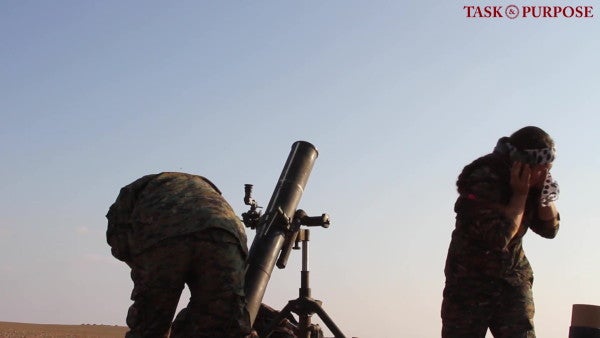Chaos at the Pentagon as military strategy changes with every Trump tweet
In past wars, it was possible to mark the U.S. military's positions with flags on paper maps. But we live in the age of Twitter, and since the commander in chief seems to be visited by the Good Idea Fairy every 15 minutes, there is no way to have an updated map of where U.S. forces are.

Beloved readers: After a week filled with more twists and turns than this reporter's lower intestines, your friend and humble narrator has no idea where the hell troops are withdrawing from or going to.
In past wars, it was possible to mark the U.S. military's positions with flags on paper maps. But we live in the age of Twitter, and since the commander in chief seems to be visited by the Good Idea Fairy every 15 minutes, there is no way to have an updated map of where U.S. forces are.
With regards to Syria, the U.S. military isn't leaving. It's repositioning forces because the mission has changed from fighting ISIS to protecting the oil. (This also may make the first time a sitting president has not tried to camouflage sending troops to protect oil by claiming the United States was liberating oppressed people.)
On Oct. 20, President Donald Trump tweeted the following Syria update after speaking with Defense Secretary Mark Esper: “We have secured the Oil. Bringing our soldiers home!”
Since Trump referred to the defense secretary as “Mark Esperanto” in his first tweet, this naïve reporter thought that perhaps the bit about securing the oil was also a mistake. But no, the president had actually just issued his marching orders.
The following day, Esper first announced that the Pentagon was in fact considering having troops remain in eastern Syria to prevent ISIS from making money from oil fields. Then on Friday, Esper said that “some mechanized forces” would deploy near Deir ez-Zor to guard the oil fields.
In a nutshell, that means the U.S. troops who were in northeastern Syria are retreating to western Iraq, where they can't stay long because the Iraqi government has given them four weeks to gas up, visit the restroom, and go somewhere else.
Separately, you have mechanized vehicles in Kuwait – possibly M1 Abrams tanks or Bradley fighting vehicles – that will likely have to be transported through Iraq so they can get to eastern Syria. Those vehicles will require support personnel, so the number of U.S. troops in Syria might not change much when all is said and done. (This is called the “Walk Backwards and Say You're Leaving” strategy.)
One reason why your friend and humble narrator is offering so much conjecture is the Pentagon is refusing to say how many troops might remain in Syria. In fact, the entire U.S. military is sworn to secrecy about how many of America's sons and daughters are in harm's way.
For example, defense officials have consistently told reporters that roughly 14,000 U.S. troops were in Afghanistan. Then on Oct. 21, the top U.S. commander in Afghanistan, Army Gen. Austin Miller, announced that “unbeknownst to the public,” the number of US troops in Afghanistan had dropped from 15,000 to 13,000 over the past year.
The reason it was “unbeknownst to the public” is because the U.S. military has been hiding the troop reduction, even when reporters have asked if there had been any changes in troop numbers.
Your friend and humble narrator suspects that one reason the military is so opaque about troop numbers is defense officials are getting their revenge on President Barack Obama's national security council, which was so obsessed with the optics of how many troops were in combat zones that the 101st Combat Aviation Brigade sent only 800 of its 2,800 personnel to Afghanistan in 2015 so they could be under Obama's troop cap. (Many of the troops who didn't deploy were aircraft maintainers.)
But there's a more practical reason for the Pentagon to be so obscure: Every time Trump tweets about the military, the Defense Department has to pretend the president's latest missive is all part of a wider plan that has been properly thought out ahead of time.
By giving as little information as possible, the Pentagon hopes to avoid revealing that it is actually reacting on the fly to try to make Trump's latest great idea not end in a total disaster.
Jeff Schogol covers the Pentagon for Task & Purpose. He has covered the military for 14 years and embedded with U.S. troops in Iraq and Haiti. Prior to joining T&P, he covered the Marine Corps and Air Force at Military Times. Comments or thoughts to share? Send them to Jeff Schogol via email at schogol@taskandpurpose.com or direct message @JeffSchogol on Twitter.
